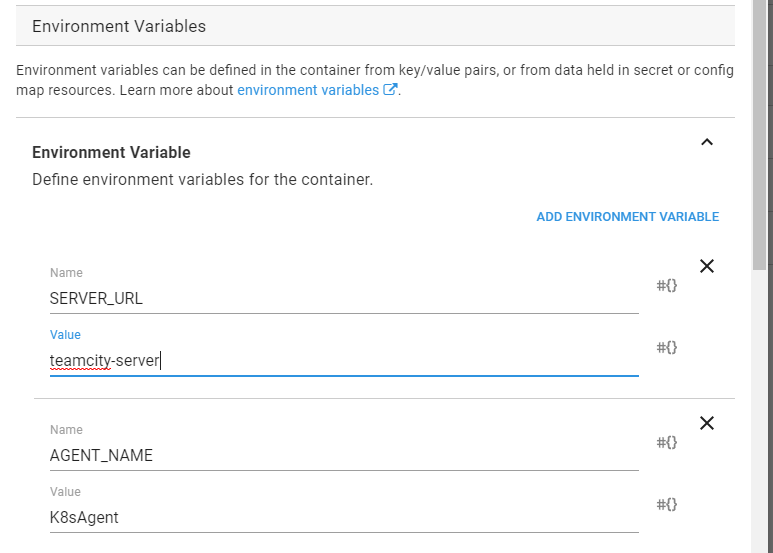

Jenkins has made a foray into this concept, in which users have the option to develop pipelines in Groovy Scripts.
#Teamcity kubernetes code
In the CI/CD domain, this trend has manifested as the Pipeline as Code concept.

#Teamcity kubernetes download
There are also options to inspect and download artifacts of past build runs.Ī recent trend in computing is to capture different elements of digital infrastructure in code, where they can be subjected to standard practices, like version control and review. TeamCity elegantly addresses this: the artifacts from one step can be made available to the next step without any additional effort. However, as is often the case with most build chains, the artifacts from intermediate steps only need to be transported to the next step. Usually, in Jenkins, the files are uploaded to an externally managed repository. Jenkins relies heavily on plugins to manage artifacts (output files created by the build process). Before the introduction of pipelines in Jenkins 2.0, this was an extremely arduous task in Jenkins. Every project consists of build configurations, and each build configuration can be broken down into individual build steps. It is easy to setup build chains with dependencies. TeamCity adopts this concept into its design and layout. Another killer feature is the Pre-tested Commit, which allows developers to test the feature before committing to it.Ī typical use case for adopting a CI tool is creating a chain of build steps corresponding to various stages of release. Developers will love the display of changes per build and difference viewer, which is integrated into the UI. Adopting standard practices, like feature branches and pull requests, are extremely easy. Extra flexibility allows you to configure what branches to track and when to trigger a build and add custom checkout rules. TeamCity allows you to define “VCS roots” for your projects, where you can wire up your source repository.

Integration With Version Controlįoremost among TeamCity’s attractive features is superior integration with your version control system. In this regard, TeamCity appears a well-developed CI tool that natively and seamlessly supports most basic features. Although there are Jenkins plugins available for anything imaginable, installing and configuring them can be an extra hassle for administrators. With the release of Jenkins 2.0, project owners have reconsidered this approach and have started to pre-bundle basic functionalities in the installation package. Traditionally, Jenkins has been a bare-bones CI tool, supporting only the most basic features and relying on an extensive ecosystem of plugins to achieve common tasks. TeamCity, from Jetbrains, stands out in this arena, and DevOps engineers and administrators would be wise try TeamCity when evaluating the available options.

Recently, more alternatives (like Atlassian’s Bamboo and Amazon’s CodePipeline) have emerged as the field has become more mature and refined. Jenkins, which began as a collaborative and open source project at Sun Microsystems under the name Hudson, was quickly adopted by a large user base and has helped refine and standardize this field. Among existing CI/CD tools, Jenkins has emerged as the de-facto leader.
#Teamcity kubernetes software
Along with version control and automated tests, CI/CD forms the backbone of modern software development projects. The practice of Continuous Integration (CI) and Continuous Delivery (CD) allows projects to integrate, test and release software in short cycles.


 0 kommentar(er)
0 kommentar(er)
